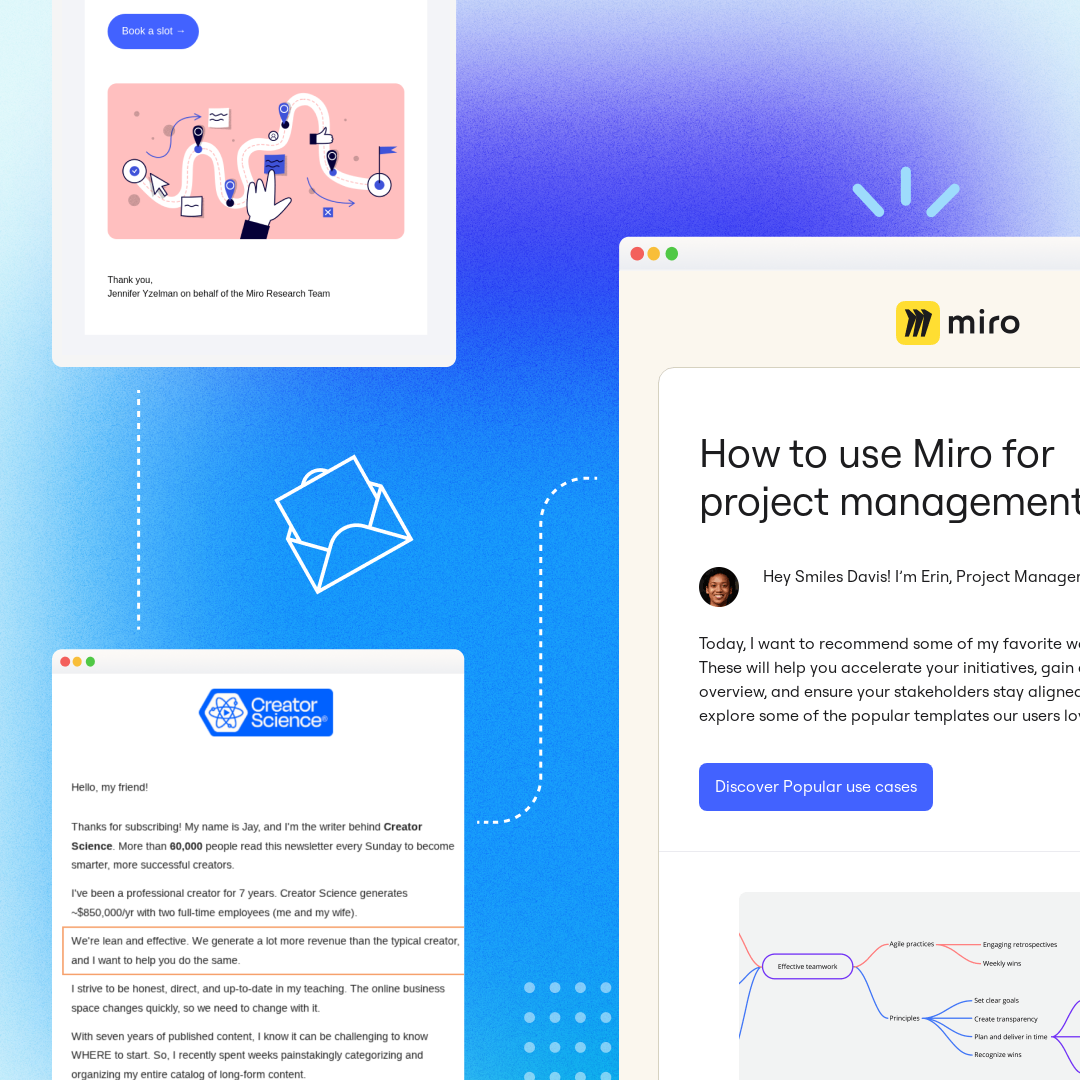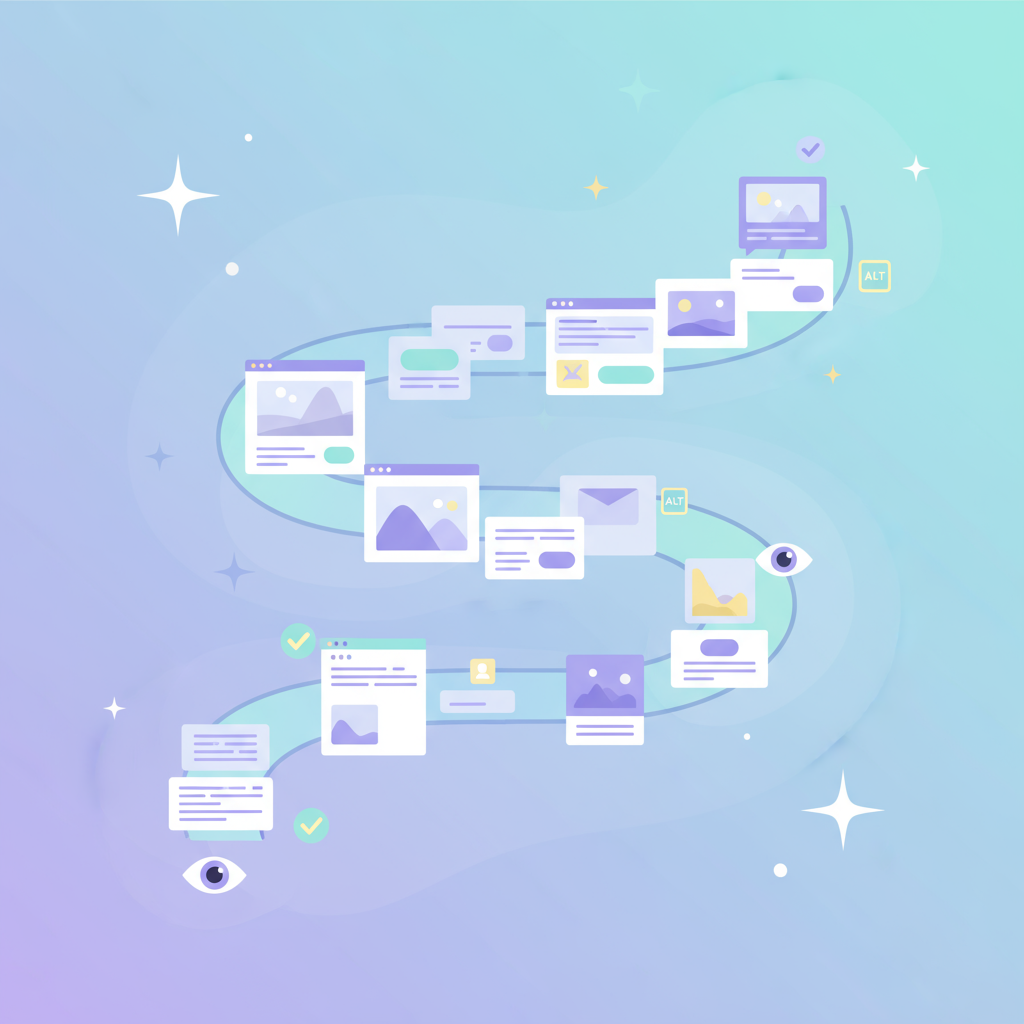
Social media and email marketing are two of the most powerful tools for reaching your target customers. It is stated that 76% of consumers have purchased a brand they saw on social media, and 59% of customers said marketing emails influenced their decision to buy.
Based on these findings, we think it’s safe to say that combining the two channels will only increase your reach and drive more conversions.
But let’s face it. It’s easier said than done. To integrate them effectively, you need a clear strategy. You can’t just combine email marketing and social media elements on a whim.
Here are some of the six best practices for combining social media with email marketing and boosting your marketing efforts. But first, the basics:
What are the benefits of combining social media and email marketing?
Integrating social media and email marketing can create a dynamic synergy to enhance your marketing efforts. By combining these two channels, marketers can:
1. Reach a wider audience
Different channels have different audiences. Therefore, combining social media and email marketing will help you amplify your message and solutions and widen your reach.Furthermore, integrating your social media and email marketing efforts lets you engage your potential customers across multiple touch points with personalized messages.
I mean, they do say that it takes a potential customer seeing your brand 7 times to get them to complete the desired action ;)
Social media elements like user-generated content can build trust and credibility with your audience. Not only does it allow your brand to reach other communities, but using the UGC in your emails is said to lead to a 73% boost in clickthrough rate.
2. Boost engagement
Boosting engagement is important in any business. A successful engagement of consumers contributes to 23% of a company’s increase in revenue, according to Gallup.
To boost email engagement, one strategy is to include social sharing buttons in your emails - leading them to different avenues to experience your brand and engage with your content. Vise versa; youcan also promote your newsletter using social platforms. We’ll talk more about this later!
3. Ensures multi-channel touch points and forms of communications
Companies with an effective multi-channel communication strategy retain 89% of their customers.
The integration of the two channels works well because of their differences. While email is a more direct and mass communication channel, social media enables real-time interactions and encourages open 1-1 conversations.You can create a comprehensive communication strategy that leverages the strengths of both channels for the best results.
For instance, as a business, you can maximize social media’s capacity to showcase your product and curate curiosity that will help generate new subscribers. Then, you can use email’s strengths, like segmentation and personalization, to nurture those leads to become paying customers (and repeat customers).
4. Build customer loyalty
Social media and email marketing provide valuable insights into your audience's behaviors, interests, and preferences. These insights are critical to personalization.
80% of consumers are more likely to do business with a company that offers personalized experiences. Personalization has become expected for consumers. So much so that 63% of shoppers will stop buying from companies if they use poor personalization strategies.
The truth is that consumers want to feel like they are the most important, and they are, so get to know them! More than 70% of customers say they would buy from a brand they feel connected to.Tools like segmentation, automation, and personalization are driven by how your users behave and act on both social and email.
Leveraging these can help you craft campaigns where your readers feel seen and are inspired to take action and look forward to engaging with your brand again.
Effective strategies for integrating social media and email marketing
These strategies have been used by big brands such as Amazon, Copyblogger, and Hubspot and have proven to help achieve a successful integration of social media and email marketing.
1. Incorporate social media icons into your email campaigns
As mentioned previously, one effortless strategy is to integrate social icons into all of your emails. This helps brand engagement, which, according to Lucidpress, is responsible for a 23% boost in a company’s revenue.
Here’s an example of how Amazon uses social media icons into their emails:

2. Include social sharing buttons in your emails
What’s the difference between icons and sharing buttons?While icons direct your subscribers to your social profiles, sharing buttons allow subscribers to share the email content on their social media platforms.
This is a great way to allow your email subscriber to promote your email newsletter to their social media audience.A great way to encourage sharing is to consider adding a call-to-action like “Share with Friends” so your recipients know what to do with the social sharing buttons.
This is exactly what Copyblogger did:

You can even run a referral campaign and provide a discount to readers who use the social sharing buttons.
3. Share e-business card with links to social media in email signature
An e-business card allows you to boost your networking efforts and provides a convenient option for potential clients to connect with you on platforms like LinkedIn, Twitter, and others.
E-business cards are a lot more personable than social icons since they lead to your personal social media. This strategy can be especially helpful for Sales teams whose mission is building customer rapport. Some ways to do this is by adding links or QR scans that lead them to the social platform of your choice.
4. Use social media profiles to promote email signups
Adding a link to your email signup page in your social media bios is a must. This helps lessen the barriers to entry since potential customers don’t have to go all the way to your website and look for your email subscriber form.
A link management tool comes in handy if you have more than one link you'd like to add to your social profiles for easy access. These tools help to consolidate all the links to your marketing resources–newsletter, websites, and social media platforms, giving customers more options to connect and engage with your brand.
The image below shows how Hubspot used a link-management tool to promote their email signup on TikTok. Below the Subscribe button are other buttons that lead to the brand’s newest blog posts.

5. Target your email subscribers with social media ads
Retargeted ads allow you to re-engage with an audience that has already expressed interest in your brand but never made a purchase. Ad retargeting allows you to showcase your latest offerings, promote your events, or run conversion-focused campaigns like discount sales, limited-time offers, exclusive deals, etc.
You can use your email list to run these retargeted ads aimed at your subscribers.
Just upload your email subscriber list; the social platform will match each email address with that person’s profile on the channel. If you want the best results, personalize your ad messaging to resonate with specific segments of your audience. And don't forget to include a strong call to action.
6. Promote your lead magnet on social media
A lead magnet can include an ebook, industry guide, case studies, and webinars. It is usually a way to encourage email sign-ups by offering potential customers free access to a resource.
Think, Litmus’ “State of Emails Workflow Reports.”
Lead magnets allow you to begin nurturing relationships with potential customers with email sequences or consistent, relevant email communication, which may result in them becoming paying customers. Social media comes into play as a way to promote your lead magnets. You can use paid ads or organic social posts to promote your ebook or webinar. Just highlight your lead magnet's unique value and benefits in your social media post or ad.
Also, ensure your lead magnet is something only your potential customers–not everyone–will find valuable.
Remember, your ultimate goal is to sell. Imagine a scenario where you sell email marketing software and offer an Amazon gift card as your lead magnet on social media. You’ll likely get many subscribers, but these might also include those who will never even purchase email marketing software.
Don’t forget to analyze the performance of your lead magnets on social media and leverage the insights to fine-tune your campaigns.
Get started on integrating social media and email marketing
Combining social media and email marketing is a win-win for you and your customers. Together, they form a powerhouse to extend your reach, drive traffic and conversions, enhance personalization, and foster brand loyalty.
Beefree is a great tool for creating social media assets like a link in bio page, landing pages with a form for new subscribers, and fully-fledged email campaigns. Its drag-and-drop functionality and thousands of free editable templates make getting started easy.
The best part? It's free! - Happy designing.



